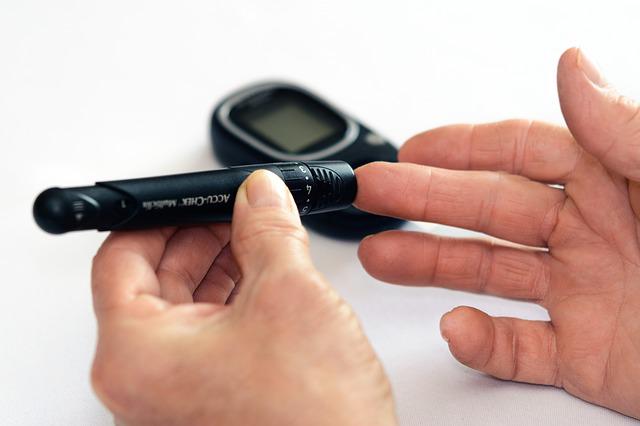Steps You Can Take to Lower Your Risk of Diabetes
You’ve probably heard of diabetes, but what exactly is prediabetes? Prediabetes is a condition in which the sugar level in your blood rises over normal but not to the amount required to be diagnosed with diabetes. According to the Centers for Disease Control and Prevention, one in every three adults in the United States has prediabetes (1). Prediabetes, if left untreated, can progress to type 2 diabetes, heart disease, and stroke. Prediabetes indicates that your body is having difficulty handling sugar effectively. The good news is that prediabetes can be reversed, and you may prevent or delay the onset of type 2 diabetes by making lifestyle changes such as eating healthier meals, avoiding sugary foods, and getting regular exercise.
When you are diagnosed with prediabetes, it is natural to panic and begin to worry about the worst-case situation. A better way to look about it is as a warning sign. As previously said, it is reversible; therefore now is the time to act.
Diabetes is diagnosed when your HBa1c blood sugar test results are more than 48 mmol/ml (2). Prediabetes is diagnosed when blood sugar levels rise over 42 mmol/l and reach 47 mmol/l (3). We won’t go into detail about what mmol/ml implies because it’s not essential. All you need to know is how to lower it to less than 42 mmol/ml.

So, what do I need to do now? Rather than attempting to make drastic adjustments to your food and physical activity, it is preferable to make incremental, lasting modifications. Your prediabetes diagnosis was most likely the result of a combination of factors spanning many years, including a poor diet and a lack of exercise. However, it is never too late to begin.
If your doctor has diagnosed you with prediabetes, it is time to take action. This disease raises your chances of being diagnosed with type 2 diabetes, which can lead to other major health issues. Heart disease, stroke (4), and renal damage are among them (5). The good news is that prediabetes can be reversed. And it all begins with minor modifications to your food and lifestyle.
Reducing your intake of sugar and processed carbohydrates is a good place to start. These foods produce an increase in blood sugar, which can contribute to insulin resistance over time (6). Unfortunately, this may not be as straightforward as it appears because sugar is just as addictive as cocaine (7). Giving off sugar all at once is not sustainable over time. This is due to the fact that you will suffer withdrawal symptoms, exactly like with opioid medicines. These might be irritability or despair caused by a sweet tooth. Again, there is no need to comprehend why this occurs other than the release of the hormone dopamine, which provides us a reward effect when we eat sweet foods (7).
To accomplish this, you must gradually lower your sugar intake. If you normally use two sugars in your tea or coffee, start with half a teaspoon and work your way up until you’ve become acclimated to the flavor. Avoid using artificial sweeteners since they are equally as sweet as sugar, if not sweeter, and will make you need even more sweetness in your meals or beverages. As a result, you are less inclined to choose sugar-free meals, such as vegetables (8). However, xylitol and erythritol are natural sweeteners that are less sweet than sugar and have fewer calories. They are granular, like table sugar, and can be used in baking if you must have biscuits. These are far superior options, and two studies (9) (10) have discovered that erythritol has diabetes-protective properties.
Other strategies to minimize sugar intake include eating one or two biscuits instead of the entire packet and substituting fresh fruit, particularly berries, for a sugar-laden dessert. Alternatively, eat a lesser piece.
Processed carbs include biscuits, cakes, morning cereals, pies, and pastries, which, like supermarket-ready meals, should be avoided. Instead, consume plenty of fresh fruits and vegetables, healthy grains, and lean protein like chicken and fish. This is due to the presence of fibre in fruits, vegetables, and whole grains, which slows the rate at which food is digested while also keeping blood sugar levels stable. Protein also takes longer to digest and aids with blood sugar regulation (11). If you have difficulty giving up fast food or ready meals, consider adding a lot of veggies or salad to the meal and eating them first.
Eating the veggies first will fill you up because of the fiber content, so you will consume fewer processed items. This method of including healthy aspects into your meals ensures that you don’t miss out on your favorite foods while also increasing your intake of nutrients that can help improve your immune system and reduce the progression of prediabetes to full-blown diabetes.
The next thing you should do is improve your level of activity in your life. This is because exercise helps to manage insulin resistance, lower Hba1c, and enhance cardiovascular health, all of which have several general health advantages (12). Just 30 minutes of moderate movement most days of the week, on average, can assist improve blood sugar management. This does not imply that you must purchase a gym membership or a plethora of equipment or devices. A short walk after your main course would suffice. All you have to do is think of methods to incorporate more activity into your day. Here are a few recommendations: If you drive to work, park as far away as possible and walk the rest of the way; take the stairs instead of the lift/elevator; march on the spot when brushing your teeth, and walk about instead of sitting when talking on the phone.
If you want more exercise, you may join a jogging group or look up thousands of exercises online. These range from sitting exercises for the less mobile to aerobic dancing routines and high-intensity training for the more mobile. There is no reason to be bored or not to find something to start with. To avoid injury, remember to warm up and stretch afterward.
Making these adjustments may be difficult at first. But if you continue with it, you’ll be well on your way to reversing prediabetes and lowering your chances of acquiring type 2 diabetes. Whether you have prediabetes for the first time or have had it for a while, implementing adjustments today will benefit your health in the short and long term. These modifications may appear little, yet they may significantly impact your health. So don’t put it off any longer—act now. Remember that prediabetes is reversible. Type 2 diabetes and other significant health problems can be avoided or delayed with modest effort.
- Prediabetes – Your Chance to Prevent Type 2 Diabetes https://www.cdc.gov/diabetes/basics/prediabetes.html
- What is Hba1c https://www.diabetes.org.uk/guide-to-diabetes/managing-your-diabetes/hba1c
- Prediabetes (Borderline Diabetes) https://www.diabetes.co.uk/pre-diabetes.html
- Diabetes, Heart Disease, & Stroke https://www.niddk.nih.gov/health-information/diabetes/overview/preventing-problems/heart-disease-stroke
- Diabetic nephropathy (kidney disease) https://www.mayoclinic.org/diseases-conditions/diabetic-nephropathy/symptoms-causes/syc-20354556
- Death by Carbs: Added Sugars and Refined Carbohydrates Cause Diabetes and Cardiovascular Disease in Asian Indians https://www.ncbi.nlm.nih.gov/pmc/articles/PMC6139832/
- Sugar addiction: is it real? A narrative review https://paulogentil.com/pdf/Sugar%20addiction%20-%20is%20it%20real%20-%20A%20narrative%20review.pdf
- Artificial sweeteners: sugar-free, but at what cost? https://www.health.harvard.edu/blog/artificial-sweeteners-sugar-free-but-at-what-cost-201207165030
- Effects of Erythritol on Endothelial Function in Patients with Type 2 Diabetes Mellitus – A Pilot Study https://www.ncbi.nlm.nih.gov/pmc/articles/PMC4037362/
- Multi-Targeted Mechanisms Underlying the Endothelial Protective Effects of the Diabetic-Safe Sweetener Erythritol https://www.ncbi.nlm.nih.gov/pmc/articles/PMC3673924/
- Carbohydrates and Blood Sugar https://www.hsph.harvard.edu/nutritionsource/carbohydrates/carbohydrates-and-blood-sugar/
- The importance of exercise when you have diabetes https://www.health.harvard.edu/staying-healthy/the-importance-of-exercise-when-you-have-diabetes
The post Prediabetes – Steps You Can Take to Reduce It appeared first on https://gqcentral.co.uk










Comments are closed